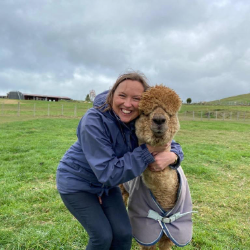Leaflet design, similar to other forms of graphic design, should be guided by principles that ensure the communication is effective, visually appealing, and memorable. Here's how key graphic design principles should influence leaflet design:
1. Clarity and Simplicity
Guidance: The primary message should be instantly clear.
Application: Limit each leaflet to one main message or offer. Use simple, clean visuals that don't overwhelm the reader. Less is often more in leaflet design to ensure the message isn't lost in complexity.
2. Hierarchy
Guidance: Organize information in a way that guides the reader through the content.
Application: Use different font sizes, weights, or colors to differentiate between titles, subtitles, and body text. Place the most critical information (like the main offer or event details) at the top or center where it's most likely to be seen first.
3. Contrast
Guidance: Ensure all elements are legible and stand out.
Application: Use high contrast between text and background. For instance, dark text on a light background or vice versa. Highlight key information with colors that contrast with the rest of the design.
4. Alignment
Guidance: Maintain a clean, organized look with proper alignment.
Application: Align text and images to a grid or to each other to create a professional appearance. This could mean left-aligning text for readability or center-aligning for a symmetrical design.
5. Consistency
Guidance: Keep design elements uniform to strengthen brand identity.
Application: Use consistent fonts, colors, and style of imagery throughout the leaflet. If it's part of a larger campaign, ensure it matches other materials in color and tone.
6. Proximity
Guidance: Group related items together to show connection.
Application: Place related pieces of information like event details or product features close to each other. This helps the reader process the information as a cohesive unit.
7. Repetition
Guidance: Use repeated elements to unify the design.
Application: Repeat the logo, color scheme, or decorative elements to reinforce the design's theme. Consistent bullet styles or header treatments can also provide visual continuity.
8. Balance
Guidance: Distribute visual weight evenly or intentionally.
Application: Balance text with images, perhaps using a large image on one side countered by text blocks on the other. Consider both formal balance (symmetrical) and informal (asymmetrical) for impact.
9. Color
Guidance: Use color to evoke emotion or highlight information.
Application: Choose colors that align with the message or brand. For promotions, bright colors can attract attention, while for serious topics, more subdued tones might be appropriate. Ensure colors are print-friendly if physical leaflets are being produced.
10. Typography
Guidance: Select fonts that enhance readability and convey the right tone.
Application: Use no more than two or three fonts, one for headings and one for body text. Ensure the font size is large enough for easy reading, particularly if the leaflet will be viewed at a distance or by an older audience.
11. Space
Guidance: Use white space to prevent visual clutter.
Application: Allow breathing room around text and images. White space can help guide the eye and make the design feel more elegant or urgent, depending on its use.
12. Imagery
Guidance: Use images that support your message and are of high quality.
Application: Select imagery that directly relates to your content (e.g., a product image for a promotion). Ensure images are high resolution for print or optimized for digital viewing without loss of quality.
13. Call to Action (CTA)
Guidance: Make it clear what you want the reader to do.
Application: Use a distinctive button or text for your CTA, perhaps in a contrasting color or with an arrow pointing to it. Place it strategically where it naturally follows the information flow.
14. Scalability
Guidance: Design with both size and format in mind.
Application: If the leaflet might be seen in different sizes (print vs. digital), ensure the design scales well. Use vector graphics for logos or icons to maintain quality at various sizes.
15. Accessibility
Guidance: Consider all potential readers.
Application: Use clear, simple language, and ensure designs are legible for people with visual impairments by maintaining good contrast and font size. Include alt text for digital versions.
By adhering to these principles, designers can create leaflets that not only look good but also effectively communicate the intended message, engage the audience, and prompt the desired action. Remember, the constraints of a leaflet's size mean every design choice must be purposeful and efficient.


